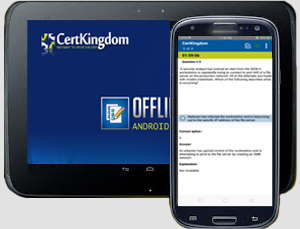Exam: 2V0-13.25

|
|||||||||||||||||||||||||||
The VMware Cloud Foundation 9.0 Architect (2V0-13.25) exam, which leads to
VMware Certified Professional – VMware Cloud Foundation Architect certification
(VCP-VCF Architect), is a 60-item exam with a passing score of 300 using a
scaled method. Candidates are given an appointment time of 135 minutes, which
includes adequate time to complete the exam for non- native English speakers.
Exam Details
Language: English
Duration: 135 Minutes
Number of Questions: 60 (English)
Format: Multiple Choice, Multiple Choice Multiple Selection
Passing Score: 300
Recommended Courses VMware Cloud Foundation: Solution Architecture and Design
Required Exams VMware Cloud Foundation 9.0 Architect (2V0-13.25)
VMware Certifications validate the critical skills required to integrate and
manage the technology that drives our customers desired business outcomes.
Certifications are organized into multiple technology areas with levels for
those new to the industry as well as experts in the field.
VMware Cloud Foundation
VMware Cloud Foundation (VCF) certifications are designed to prepare IT
professionals to build and manage modern private cloud environments using VMware
technologies.
Exam Sections
VMware exam blueprint sections are now standardized to the five sections
below, some of which may NOT be included in the final exam blueprint depending
on the exam objectives.
Section 1 – IT Architectures, Technologies, Standards
Section 2 – VMware Products and Solutions
Section 3 – Plan and Design the VMware Solution
Section 4 – Install, Configure, Administrate the VMware Solution
Section 5 – Troubleshoot and Optimize the VMware Solution
If a section does not have testable objectives in this version of the exam, it
will be noted, accordingly. The objective numbering may be referenced in your
score report at the end of your testing event for further preparation should a
retake of the exam be necessary.
Sections Included in this Exam
Section 1 - IT Architectures, Technologies, Standards
Objective 1.1 - Differentiate between business and technical requirements
Objective 1.2 - Differentiate between a Conceptual Model, logical design and
physical design
Objective 1.3 - Differentiate between requirements, assumptions, constraints and
risks
Objective 1.4 - Differentiate between availability, manageability, performance,
recoverability and security (AMPRS)
Objective 1.5 - Develop and document a risk mitigation strategy
Objective 1.6 - Document design decisions
➢ Establish relationships between a design decision and a requirement
➢ Specify the implications of design decisions
Objective 1.7 - Develop a design validation strategy
Section 2 - VMware Products and Solutions
Objective 2.1 - Based on a scenario, differentiate between VMware Cloud
Foundation (VCF) architecture options
Section 3 - Plan and Design the VMware Solution
Objective 3.1 - Gather and analyze business objectives and requirements
Objective 3.2 - Given a set of business objectives, create a conceptual model
Objective 3.3 - Create VMware Cloud Foundation (VCF) logical designs
* Given a scenario, identify the prerequisites for VCF
* Given a scenario, identify the design decisions to support different VCF Fleet
topologies - Logical Design
* Given a scenario, identify the design decision(s) to support a Network
Infrastructure - Logical Design
* Given a scenario, identify the design decision(s) to support a VCF Management
Domain - Logical Design
* Given a scenario, identify the design decision(s) to support a VCF Workload
Domain - Logical Design
* Given a scenario, identify the design decision(s) to support a VCF Networking
- Logical Design
* Given a scenario, identify the design decision(s) to support a VCF Automation
- Logical Design
* Given a scenario, identify the design decision(s) to support a VCF Operations
- Logical Design
Objective 3.4 - Create VMware Cloud Foundation (VCF) physical designs
* Given a scenario, identify the prerequisites for VCF
* Given a scenario, identify the design decision(s) to support a VCF Fleet
topology - physical design
* Given a scenario, identify the design decision(s) to support a Network
Infrastructure - physical design
* Given a scenario, identify the design decision(s) to support a VCF Management
Domain - physical design
* Given a scenario, identify the design decision(s) to support a VCF Workload
Domain - physical design
* Given a scenario, identify the design decision(s) to support a VCF Networking
- physical design
* Given a scenario, identify the design decision(s) to support a VCF Automation
- physical design
* Given a scenario, identify the design decision(s) to support a VCF Operations
- physical design
Objective 3.5 - Design for Availability
* Given a scenario, identify the design decision(s) to support a solution that
provides availability within an availability zone
* Given a scenario, identify the design decision(s) to support a solution that
provides availability across availability zones
Objective 3.6 - Design for Manageability
* Design for Lifecycle Management
* Design for Scalability
* Design for Capacity Management
Objective 3.7 - Design for Performance
* Given a scenario, identify design decision(s) that meet performance
requirement
Objective 3.8 - Design for Recoverability
* Differentiate between Business Continuity Disaster Recovery (BCDR) strategies
for Management Components and Workloads
* Given a scenario, identify the design decision(s) to meet Business Continuity
requirements
* Given a scenario, identify the design decision(s) to meet Disaster Recovery
requirements
Objective 3.9 - Design for Security
* Given a scenario, identify the design decisions for securing VCF
Management Components and Workloads.
Objective 3.10 - Design a Workload Migration / Onboarding strategy
* Given a scenario, identify the design decisions for workload migration
into a VCF environment
Objective 3.11 - Design a consumption strategy for VMware Cloud Foundation (VCF)
* Given a scenario, identify the design decisions for VCF Automation Tenant
Design
* Given a scenario, identify the design decisions for Self-Service & Governance
* Given a scenario, identify the design decisions for automating VCF
infrastructure components
* Given a scenario, identify the design decisions for supporting Modern
Applications in VCF environment
Objective 3.12 - Design a monitoring strategy for VMware Cloud Foundation (VCF)
* Given a scenario, identify design decisions for monitoring VCF management
components
* Given a scenario, identify design decisions for monitoring VCF Workloads
Section 4 - Install, Configure, Administrate the VMware Solution
NO TESTABLE OBJECTIVES THIS SECTION
Section 5 - Troubleshoot and Optimize the VMware Solution
NO TESTABLE OBJECTIVES THIS SECTION
2V0-13.25 Brain Dumps Exam + Online / Offline and Android Testing Engine & 4500+ other exams included
$50 - $25 (you save $25)
Buy Now
QUESTION 1
An administrator needs to ensure that only specific users can manage the
virtual machines (VM) in a specific VMware vCenter folder.
Which three steps are required to accomplish this? (Choose three.)
A. Assign the new role to the appropriate users/groups.
B. Create a new role in vCenter with VM management permissions.
C. Apply the role to the specific vCenter folder.
D. Add the identity source to vCenter.
E. Create a datastore cluster.
Answer: A, B, C
QUESTION 2
An administrator needs to enable the enhanced capabilities of Storage
Operations for vSAN 9.0 in
VMware Cloud Foundation (VCF) Operations.
What three prerequisite steps must be completed in order to enable the advanced
Diagnostic
Troubleshooting, Benchmarking and Optimizing?
(Choose three.)
A. No configuration required, Run New Diagnostics is enabled automatically.
B. Enable and start the vSAN Performance service in the target vCenter.
C. Configure a vSAN account for the vCenter Integration Instance.
D. Assign the VCF Operations Service Account administrative rights to vSAN
Objects.
E. Assign the credentials configured in the vCenter Integration instance have
access to vSAN objects.
F. Open port 5989 on each VCF Operations node on which the vSAN adapter exists.
Answer: B, C, E
QUESTION 3
How does an administrator configure VMware Cloud Foundation (VCF) Operations
for logs to send
Notifications and Metrics to VCF Operations?
A. Configure the Integration through VCF Operations for Logs.
B. Launch the wizard from VCF Operations for Logs.
C. Launch the wizard from VCF Operations.
D. Configure the Integrations through VCF Operations.
Answer: A
QUESTION 4
An organization uses VMware Cloud Foundation (VCF) Operations to monitor and
troubleshoot issues
within a VMware vSphere Foundation (VVF) environment.
As part of the root cause analysis following a recent critical event, the
administrator determined that
specific log messages on a host clearly identified the problem.
What should the administrator implement to provide additional data to help
troubleshoot in the future?
A. VCF Operations for logs
B. VCF Operations Diagnostics
C. VCF Operations Management Pack for VCF
D. VCF Automation
Answer: A
QUESTION 5
An administrator is preparing to deploy VMware vSphere Foundation using the
VMware Cloud
Foundation (VCF) Installer wizard. During host onboarding, it is discovered that
the VMware ESX
hosts each have different root passwords.
Which deployment method must be used to continue the installation?
A. Proceed with the wizard and override host credentials during staging.
B. Use the deployment wizard and enter credentials per host manually.
C. Set the password to expire on all ESX hosts.
D. Use a JSON specification file to define per-host credentials.
Answer: D
Buy Complete
Certainly, here's a rewritten version of your text:
Packiam Vijendran 1 months ago - Malaysia
Passed the exam yesterday, 95% of the question were from this site. Note: Pay
more attention to all the community discussions on each question, instead of the
answers provided by the examtopics and I strongly suggest to get the contributor
access.
upvoted 4 times
Javier Cardaba Enjuto 2 months, 1 week ago - Spain
Excellent pre-exam session tool
upvoted 2 times
Palanisamy Arulmohan 1 months, 1 week ago - USA
I passed today, 94 questions asked and 99% of them were in this dump.
3 labs: BGP (as-override), HSRP, OSPF (without network statement)
upvoted 4 times
peppinauz 3 months, 2 weeks ago
I pass my exam, dump is valid about 90-95%. review the community answers!!
upvoted 6 times
Oberoi Ankit3 months, 3 weeks ago - USA Texas
Passed exam today dump still accurate. almost all the questions are here, some
are overcomplicated or incomplete on the site,
upvoted 4 times
logged members Can Post comments / review and take part in Discussion
Certkingdom Offline Testing Engine Simulator Download
Prepare with yourself how CertKingdom Offline Exam Simulator it is designed specifically for any exam preparation. It allows you to create, edit, and take practice tests in an environment very similar to an actual exam.
Supported Platforms: Windows-7 64bit or later - EULA | How to Install?
FAQ's: Windows-8 / Windows 10 if you face any issue kinldy uninstall and reinstall the Simulator again.
Download Offline Simulator-Beta
Certkingdom Testing Engine Features
- Certkingdom Testing Engine simulates the real exam environment.
- Interactive Testing Engine Included
- Live Web App Testing Engine
- Offline Downloadable Desktop App Testing Engine
- Testing Engine App for Android
- Testing Engine App for iPhone
- Testing Engine App for iPad
- Working with the Certkingdom Testing Engine is just like taking the real tests, except we also give you the correct answers.
- More importantly, we also give you detailed explanations to ensure you fully understand how and why the answers are correct.
Certkingdom Android Testing Engine Simulator Download
Take your learning mobile android device with all the features as desktop offline testing engine. All android devices are supported.
Supported Platforms: All Android OS EULA
Install the Android Testing Engine from google play store and download the app.ck from certkingdom website android testing engine download

Certkingdom Android Testing Engine Features
- CertKingdom Offline Android Testing Engine
- Make sure to enable Root check in Playstore
- Live Realistic practice tests
- Live Virtual test environment
- Live Practice test environment
- Mark unanswered Q&A
- Free Updates
- Save your tests results
- Re-examine the unanswered Q & A
- Make your own test scenario (settings)
- Just like the real tests: multiple choice questions
- Updated regularly, always current




